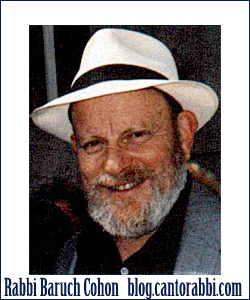…AND COUNTING – Bamidbar, Numbers 1:1-4:20
The third book of the Torah is called Numbers in English, while its Hebrew name is Bamidbar – “In the Desert.” That is where the first census of the Jewish people took place. Moses gets definite Divine orders to count his people, and he has an elder from each tribe to help him. Some elements of this census are worth examining.
For one thing, in later times counting people became a no-no. Mothers would keep track of their many children saying “nisht eyns, nisht tzvey, nisht dry…– “not one, not two, not three.” It was frowned on to number each other. So why was it a special duty for Moses?
Consider a feature of this census: it is not so much counting heads as it is registering for the draft. Each tribe counts its male members from 20 years old and up, as chapter 1:3 says: “all those who go out to the army.” The only exception is the tribe of Levi, who does not go into military service but serves in the holy Tabernacle, and Levi counts its males from the age of 30 days and up. We notice that none of these counts has an upper age limit. Once you are counted, you stay counted.
Finally, the totals recorded here do not include women, nor anyone of either sex too young to be counted. So when we read in verse 46 that “the sum of all those counted was 603,550” and in 3:49 we find the Levitic total of 22,000, that’s not everyone. Since the tribe of Levi substituted for all the firstborn sons of the nation, we find a discrepancy here. Adding the numbers of each Levitic family produces a total of 22,300. Those additional 300 Levites, say the commentators, were themselves firstborn, and might have to be redeemed. At the same time, we read in verse 46 that the firstborn of the other tribes numbered 22,273, so we might assume that the 300 firstborn Levites should compensate for them. But verse 47 answers that question, requiring that those 273 be redeemed for “five shekels per head. Give the money to Aaron and his sons, in redemption for the firstborn who are in excess.”
Of course, we are dealing with much greater numbers here. A few hundred more or less is insignificant when we consider the uncounted thousands. Historians estimate the total Israelite population at the time of this census to be at least 2 million. Over some 400 years of slavery, Jacob’s family that came to Egypt with 70 people increased 28,571 times! This, despite Pharaoh’s genocide policy of drowning all Israelite male babies, despite a work regimen that provided a model for Nazi labor camps, despite short rations and no medical attention. 2 million, and counting.
Yes, despite it all, we survive. What our ancestors did with their survival was to go to Mt. Sinai and receive the Torah, to endure 40 years in the desert, to conquer the Promised Land, to become a nation.
What will we do with our survival now?
You can contact Rabbi Baruch Cohon for further discussion and/or comments at: baruch.c.2011@gmail.com


